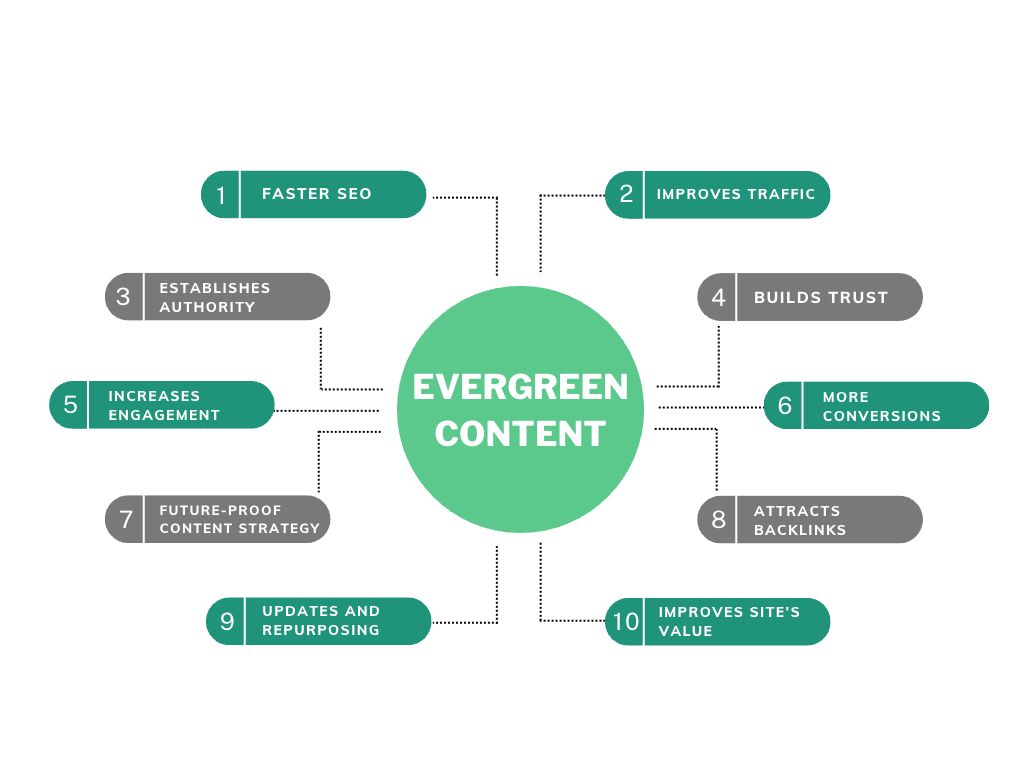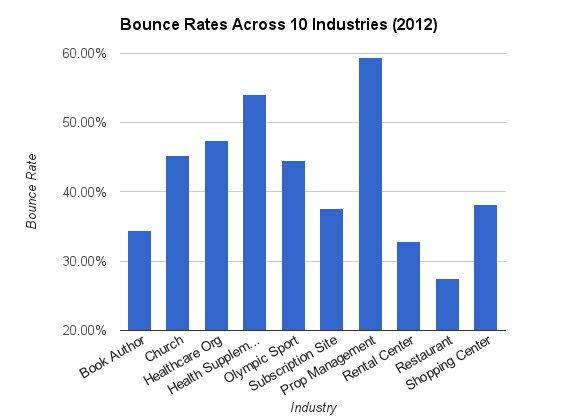
Published: Nov 30, 2024
7 Steps to Craft a Killer Small Business Content Plan
7 Steps to Craft a Killer Small Business Content Plan
I’ve seen more small business content plans than I’ve had hot dinners… and let me tell you, most of them are about as exciting as watching paint dry. But don’t worry, I’m here to spice things up! Let’s cook up a content plan that’ll make your competitors green with envy and your customers hungry for more.
TLDR: What's the secret sauce to a small business content plan that actually works?
1️⃣ Know your audience like the back of your hand
2️⃣ Set clear, measurable goals that align with your business objectives
3️⃣ Choose content types and channels that resonate with your target market
Table of Contents
- Understanding Your Audience
- Setting SMART Content Goals
- Choosing Your Content Types
- Creating a Content Calendar
- Developing a Distribution Strategy
- Measuring and Analyzing Performance
- Adjusting and Optimizing Your Plan
Understanding Your Audience
Let’s face it, without knowing who you’re talking to, your content’s gonna fall flatter than a pancake in a vacuum. So, before you start churning out blog posts or filming TikToks, you need to get cozy with your audience. Here’s how to do it without breaking the bank or losing your mind:
Dig Into Your Existing Customer Data
First things first, look at what you’ve already got. Your point-of-sale system is a goldmine of info. What are people buying? When? How often? This stuff is pure gold for figuring out what makes your customers tick.
Create Buyer Personas That Don’t Suck
Forget those boring, generic personas. We’re talking real people here. Give ‘em names, hobbies, pet peeves. Make ‘em so real you could pick ‘em out of a lineup. For example:
- “Social Media Sarah”: A 28-year-old freelance graphic designer who practically lives on Instagram. She’s always on the hunt for the next big thing to share with her followers.
- “Budget-Conscious Bob”: A 45-year-old dad of three who researches every purchase like it’s his job. He reads reviews like they’re best-selling novels.
Get Up Close and Personal
Nothing beats actually talking to your customers. Set up some informal chats or focus groups. Bribe ‘em with coffee if you have to. Ask them:
- What keeps them up at night?
- Where do they hang out online?
- What content do they actually enjoy?
Stalk Your Competitors (Legally)
Check out what your competitors are up to. Who’s engaging with their content? What’s getting crickets? Use tools like BuzzSumo to see what’s hot in your industry.
Use Social Listening Tools
Set up some social listening tools to keep an ear to the ground. Hootsuite and Mention are great for this. They’ll help you track what people are saying about your brand, your competitors, and your industry.
Don’t Forget the Demographics
Sure, it’s not the sexiest part, but knowing the age, location, and income of your audience is crucial. Use Google Analytics to get this info for your website visitors.
Create an Audience Insights Dashboard
Put all this juicy info in one place. Use a tool like Google Data Studio to create a dashboard that gives you a birds-eye view of your audience. Update it regularly and refer to it often.
Remember, understanding your audience isn’t a one-and-done deal. It’s an ongoing process. Keep checking in, keep listening, and keep adjusting. Your content will thank you for it.
Setting SMART Content Goals
Getting your content strategy off the ground without clear goals is like trying to hit a bullseye blindfolded. You might get lucky, but chances are you’ll just end up with a bunch of wasted darts. That’s where SMART goals come in handy. They’re not just another buzzword – they’re your roadmap to content success.
What the Heck are SMART Goals?
SMART is an acronym that stands for Specific, Measurable, Achievable, Relevant, and Time-bound. Let’s break it down:
-
- Instead of “increase website traffic,” try “increase organic website traffic from small business owners in the Midwest by 20%.”
-
- Use concrete numbers and percentages. “Get more social media followers” becomes “Gain 1,000 new Instagram followers.”
-
- Be ambitious, but realistic. If you’re currently getting 100 website visitors a month, aiming for 1 million in 30 days is probably not gonna happen.
-
- Make sure your content goals align with your overall business objectives. If you’re a local bakery, going viral on TikTok might be fun, but is it really going to sell more cupcakes?
-
- Give yourself a deadline. “Increase email sign-ups by 50% in the next quarter” is much more motivating than “get more email subscribers… eventually.”
SMART Goal Examples for Small Businesses
Let’s look at some real-world examples:
E-commerce
- “Increase product page views by 30% in the next 3 months by creating 12 new how-to videos featuring our top-selling items.”
Service-based Business
- “Generate 50 qualified leads through gated content downloads on our website by the end of Q2.”
Local Brick-and-Mortar
- “Boost foot traffic by 20% in the next 60 days by running a series of 6 locally-targeted Facebook ads showcasing our new product line.”
How to Set Your Own SMART Content Goals
Start with Your Business Objectives
- What’s the big picture? More sales? Better brand awareness? Customer retention?
Identify Your Key Performance Indicators (KPIs)
- These are the metrics that’ll tell you if you’re winning or not. Could be website traffic, conversion rates, social media engagement, etc.
-
- Take each of your objectives and run them through the SMART criteria. Refine until they tick all the boxes.
-
- Seriously. Put them somewhere you can see them every day. Maybe even on a Post-it note stuck to your computer screen.
-
- Get everyone on board. When the whole squad knows the game plan, you’re more likely to score.
Remember, setting goals is just the beginning. You’ve got to actually work towards them (shocking, I know). But with SMART goals in place, you’ll have a clear path forward and a way to measure your progress. Now go forth and conquer that content mountain!
Choosing Your Content Types
Picking the right content types for your small business is like choosing the perfect outfit for a first date. You want to make a great impression, show off your best features, and leave ‘em wanting more. Let’s dive into the world of content types and figure out what’ll make your audience swoon.
Blog Posts
- The bread and butter of content marketing. Great for SEO and establishing your expertise.
- Example: A local coffee shop could write about “5 Surprising Health Benefits of Cold Brew Coffee” or “The Secret to Perfect Latte Art: Tips from Our Baristas.”
Videos
- Perfect for showing, not just telling. Ideal for product demos, tutorials, or behind-the-scenes peeks.
- Try using YouTube or TikTok to reach different audiences.
Infographics
- Visual content that’s easily shareable and great for explaining complex ideas simply.
- Tools like Canva make creating infographics a breeze, even if you’re not a design whiz.
Podcasts
- Perfect for multitaskers who want to consume content on-the-go.
- Example: A local gym could start a podcast about fitness tips, nutrition advice, and interviews with local health experts.
Social Media Posts
- Quick, engaging content that keeps your brand top-of-mind.
- Mix it up with text posts, images, videos, and stories on platforms like Instagram or LinkedIn.
Email Newsletters
- Direct line to your audience’s inbox. Great for nurturing leads and keeping customers informed.
- Use tools like Mailchimp or Constant Contact to create and send newsletters easily.
Ebooks or Whitepapers
- In-depth content that positions you as an industry expert.
- Great for lead generation when offered as a free download in exchange for an email address.
Case Studies
- Show off your successes and how you’ve helped real customers.
- Example: A local marketing agency could showcase how they helped a nearby restaurant increase foot traffic by 50% through a targeted social media campaign.
How to Choose the Right Mix
Know Your Audience’s Preferences
- Check your website analytics to see what content performs best.
- Ask your customers directly through surveys or social media polls.
Consider Your Resources
- Be realistic about what you can consistently produce.
- If you’re a one-person show, maybe start with blog posts and social media before diving into video production.
Align with Your Goals
- Want to boost SEO? Focus on blog posts and long-form content.
- Looking to increase engagement? Video and social media might be your best bet.
Experiment and Iterate
- Try different content types and see what sticks.
- Use A/B testing to refine your approach.
Repurpose and Recycle
- Turn that blog post into an infographic, or chop up that long video into bite-sized social media clips.
Remember, you don’t need to do everything at once. Start with a couple of content types, do them well, and expand from there. The key is consistency and quality over quantity. Now go forth and create content that’ll make your audience hit that follow button faster than you can say “viral”!
Creating a Content Calendar
A content calendar is your secret weapon for staying organized and consistent with your small business content strategy. It’s like having a GPS for your content journey—it keeps you on track and helps you avoid those “What should I post today?” panic moments. Let’s dive into how to create one that’ll make your content game stronger than a double shot of espresso.
Google Sheets vs. Fancy Tools
First things first, you don’t need some fancy-schmancy tool to get started. A simple Google Sheets spreadsheet can do the trick. But if you’re feeling fancy, tools like CoSchedule or Trello can add some extra oomph to your planning process.
The Anatomy of a Killer Content Calendar
-
- Be specific. “Monday” isn’t enough. Go for “Monday, July 5th, 10:00 AM EST.”
-
- Blog post? Video? Social media update? Spell it out.
-
- Give a clear idea of what the content’s about. “5 Time-Saving Hacks for Small Business Owners” is better than “Business Tips.”
-
- What search term are you trying to rank for? This helps keep your SEO game strong.
-
- What do you want readers to do after consuming your content? Sign up for a newsletter? Download an ebook? Buy a product?
-
- Track where each piece is in the creation process: Idea, In Progress, Ready for Review, Published.
Planning Your Content Mix
Think of your content calendar like a balanced diet. You need a mix of different “nutrients” to keep your audience engaged:
- Evergreen Content
 These are your timeless pieces that stay relevant year-round. Think how-to guides or FAQs.
These are your timeless pieces that stay relevant year-round. Think how-to guides or FAQs. - Seasonal Content Tie your content to holidays, seasons, or industry events. A florist might create content around Valentine’s Day or Mother’s Day.
- Trending Topics Stay current by addressing hot topics in your industry. Use tools like Google Trends to spot what’s buzzing.
- User-Generated Content Showcase customer reviews, testimonials, or user photos to build trust and engagement.
Tips for Content Calendar Success
Plan Ahead, But Stay Flexible
- Try to plan at least a month in advance, but leave room for last-minute trending topics or urgent updates.
Color Code Your Calendar
- Use different colors for different content types or stages in the creation process. It’ll make your calendar easier to read at a glance.
Set Realistic Deadlines
- Don’t overcommit. It’s better to consistently publish two great pieces a week than to burn out trying to do daily posts.
Batch Create Content
- Set aside dedicated time to create multiple pieces of content at once. It’s often more efficient than switching gears constantly.
Review and Adjust Regularly
- At the end of each month, look at what worked well and what didn’t. Use these insights to inform your next month’s plan.
Remember, your content calendar is a living document. It should evolve as your business grows and your audience’s needs change. Keep it updated, keep it relevant, and most importantly, keep creating content that your audience will love. Now go forth and calendar like a boss!
Developing a Distribution Strategy
You’ve crafted killer content, but if no one sees it, what’s the point? Let’s talk about getting your content in front of the right eyeballs. Here’s how to develop a distribution strategy that’ll make your small business content work harder than a caffeinated squirrel.
Know Where Your Audience Hangs Out
First things first, you need to figure out where your target audience spends their time online. Are they scrolling through Instagram all day? Lurking on LinkedIn? Or maybe they’re podcast junkies? Here’s how to find out:
- Check your website analytics to see where your traffic is coming from
- Survey your existing customers about their favorite platforms
- Use tools like SparkToro to uncover audience insights
Pick Your Platforms Wisely
Don’t try to be everywhere at once. It’s better to rock a few channels than to spread yourself thin across a dozen. Here are some popular options:
Social Media
- Great for building brand awareness and engaging with your audience
- Each platform has its own vibe, so tailor your content accordingly
Email Marketing
- Perfect for nurturing leads and keeping customers in the loop
- Use tools like Mailchimp or ConvertKit to manage your list
Content Syndication
- Republish your content on platforms like Medium or LinkedIn Articles to reach a wider audience
Paid Advertising
- Boost your reach with targeted ads on platforms like Facebook or Google Ads
- Start small and test different approaches before scaling up
Create a Distribution Timeline
Don’t just hit publish and hope for the best. Plan out your distribution over time:
Day of Publishing
- Share on your main social media channels
- Send an email to your subscriber list
Week After Publishing
- Reshare on social media with a different angle or quote
- Reach out to industry influencers who might be interested
Month After Publishing
- Repurpose the content into a different format (e.g., turn a blog post into an infographic)
- Share in relevant online communities or forums
Leverage Partnerships and Cross-Promotion
Team up with other businesses or influencers in your niche. It’s like borrowing someone else’s megaphone:
- Guest Posting Write articles for other blogs in your industry
- Podcast Appearances Offer yourself as a guest on relevant podcasts
- Co-marketing Partner with complementary businesses for joint campaigns
Optimize for Search Engines
Don’t forget about the long game. SEO can drive traffic to your content long after you’ve published it:
- Use relevant keywords in your titles and headers
- Write meta descriptions that entice clicks
- Build high-quality backlinks to your content
Engage with Your Audience
Distribution isn’t just about broadcasting. It’s about starting conversations:
- Respond to comments on your blog and social media
- Ask questions to encourage engagement
- Use social listening tools to track mentions of your brand
Measure and Adjust
Keep an eye on what’s working and what’s not:
- Use UTM parameters to track where your traffic is coming from
- Pay attention to engagement metrics like shares, comments, and time on page
- Don’t be afraid to ditch tactics that aren’t delivering results
Remember, distribution is an ongoing process. Keep experimenting, keep measuring, and keep refining your approach. With the right strategy, your small business content can reach far beyond your immediate circle and start making some serious waves. Now go forth and distribute like a boss!
Measuring and Analyzing Performance
Let’s face it, if you’re not measuring your content’s performance, you might as well be shouting into the void. But don’t worry, I’m here to help you turn that void into a goldmine of insights. Here’s how to measure and analyze your content’s performance without losing your mind (or your shirt).
Key Metrics to Track
First things first, let’s talk about what you should be measuring. It’s not just about vanity metrics like likes and shares (though those are nice). We’re after the juicy stuff that actually impacts your bottom line.
Website Traffic
- Keep an eye on your overall traffic, but pay special attention to:
- Unique visitors
- Pages per session
- Average time on page
Conversion Rates
- This is where the rubber meets the road. Track:
- Newsletter sign-ups
- Product purchases
- Contact form submissions
Engagement Metrics
- These show how your audience is interacting with your content:
- Comments
- Shares
- Bounce Rate

SEO Performance
- Because organic traffic is the gift that keeps on giving:
- Keyword rankings
- Organic click-through rates
- Backlinks
Tools of the Trade
You don’t need a Ph.D. in data science to measure your content’s performance. Here are some tools that’ll do the heavy lifting for you:
-
- The granddaddy of all analytics tools. It’s free and packed with features.
-
- Great for tracking your SEO performance and keeping an eye on competitors.
-
- Want to see how users actually interact with your content? Hotjar’s heatmaps are like x-ray vision for your website.
-
- Perfect for tracking social media performance and finding content ideas that resonate with your audience.
-
- Another SEO powerhouse. Their Content Explorer tool is particularly useful for content analysis.
Making Sense of the Data
Now that you’ve got all this data, what the heck do you do with it? Here’s how to turn those numbers into actionable insights:
Set Benchmarks
- Compare your performance to industry standards. Hubspot’s benchmark data is a great place to start.
Look for Patterns
- Which types of content consistently perform well? Is there a day of the week when your posts get more engagement?
Track Trends Over Time
- Don’t just look at snapshot data. How are your metrics changing month-over-month or year-over-year?
Connect the Dots
- How do your content metrics relate to your business goals? If a blog post gets tons of traffic but no conversions, it might need a stronger call-to-action.
Case Study: The Coffee Shop Blog
Let’s say you run a local coffee shop called “Bean There, Done That.” You’ve been blogging for a few months and want to see what’s working. Here’s what you might find:
- Your “5 Ways to Brew Better Coffee at Home” post has the highest time on page (3 minutes) and the most social shares (200+).
- Your “History of Coffee in Our Town” post has a high bounce rate (80%) but also the most backlinks from local news sites.
- Posts published on Tuesday mornings get 30% more traffic than posts published any other time.
What to do with this info:
- Create more practical, how-to content about coffee brewing.
- Reach out to those local news sites for potential collaborations.
- Adjust your content calendar to prioritize Tuesday morning publications.
Don’t Forget the Qualitative Stuff
Numbers are great, but don’t ignore the qualitative feedback:
- Read comments on your blog and social media posts
- Send out reader surveys (try SurveyMonkey for easy setup)
- Chat with customers in-store about what content they find helpful
The Golden Rule of Content Analytics
Remember, the goal isn’t just to collect data—it’s to use that data to make your content better. If a metric doesn’t help you make decisions or improve your content, it’s just a number.
So, there you have it. Measuring and analyzing your content performance doesn’t have to be rocket science. Start small, focus on the metrics that matter to your business, and always be testing and tweaking. Now go forth and let the data guide you to content marketing glory!
Adjusting and Optimizing Your Plan
You’ve launched your content plan, and it’s humming along nicely. But here’s the thing - the digital landscape shifts faster than sand in a desert storm. What worked yesterday might not cut it tomorrow. That’s why tweaking and fine-tuning your strategy is crucial. Let’s dive into how you can keep your small business content plan fresh and effective.
Embrace the Data-Driven Approach
First things first, let’s talk data. It’s your North Star in the content wilderness.
-
- This free tool is a goldmine of insights. Keep a close eye on:
- Page views
- Time on page
- Bounce rate
- Conversion rates
- This free tool is a goldmine of insights. Keep a close eye on:
-
- Each platform has its own analytics. Pay attention to:
- Engagement rates
- Reach
- Click-through rates
- Each platform has its own analytics. Pay attention to:
-
- If you’re sending newsletters, track:
- Open rates
- Click-through rates
- Unsubscribe rates
- If you’re sending newsletters, track:
Listen to Your Audience
Your audience is talking. Are you listening?
Comments and Direct Feedback
- Read every comment. They’re gold dust for understanding what resonates.
-
- Use tools like SurveyMonkey to get direct feedback.
Conduct Regular Content Audits
Think of this as spring cleaning for your content strategy.
Identify Top Performers
- Which pieces are bringing in the most traffic or conversions?
Spot the Duds
- What’s not working? Be ruthless in cutting or revamping underperforming content.
-
- Are there topics your audience wants that you haven’t covered?
Stay on Top of Trends
The content world moves fast. Don’t get left behind.
-
- See what topics are heating up in your industry.
Industry Publications
- Subscribe to top blogs and newsletters in your niche.
-
- Keep an eye on what your competitors are doing. Tools like SEMrush can help.
Experiment and Iterate
Don’t be afraid to try new things. The content world rewards innovation.
A/B Testing
- Test different headlines, images, or CTAs. Tools like Optimizely can help.
New Content Formats
- If you’ve been all about blog posts, why not try a podcast or video series?
-
- Encourage customers to create content. It’s authentic and engaging.
Case Study: The Pivot Master
Let’s look at how a small business nailed the art of adjusting their content plan.
Yoga With Adriene, a yoga instruction channel on YouTube, started as a simple series of yoga videos. But by closely monitoring viewer comments and engagement, founder Adriene Mishler noticed a trend: viewers wanted more than just poses. They craved a holistic wellness approach.
Adriene pivoted her content strategy to include:
- Meditation guides
- Healthy recipe videos
- Mindfulness tips
The result? Her channel grew from a modest following to over 10 million subscribers, becoming one of the most popular yoga channels on YouTube.
The Bottom Line
Adjusting your content plan isn’t about overhauling everything every other week. It’s about making smart, data-driven tweaks that keep your content fresh, relevant, and effective. Remember, the goal is continuous improvement, not perfection.
So, keep your ear to the ground, your eye on the data, and don’t be afraid to shake things up when needed. Your small business content plan should be as dynamic and adaptable as you are. Now go forth and optimize like a boss!










